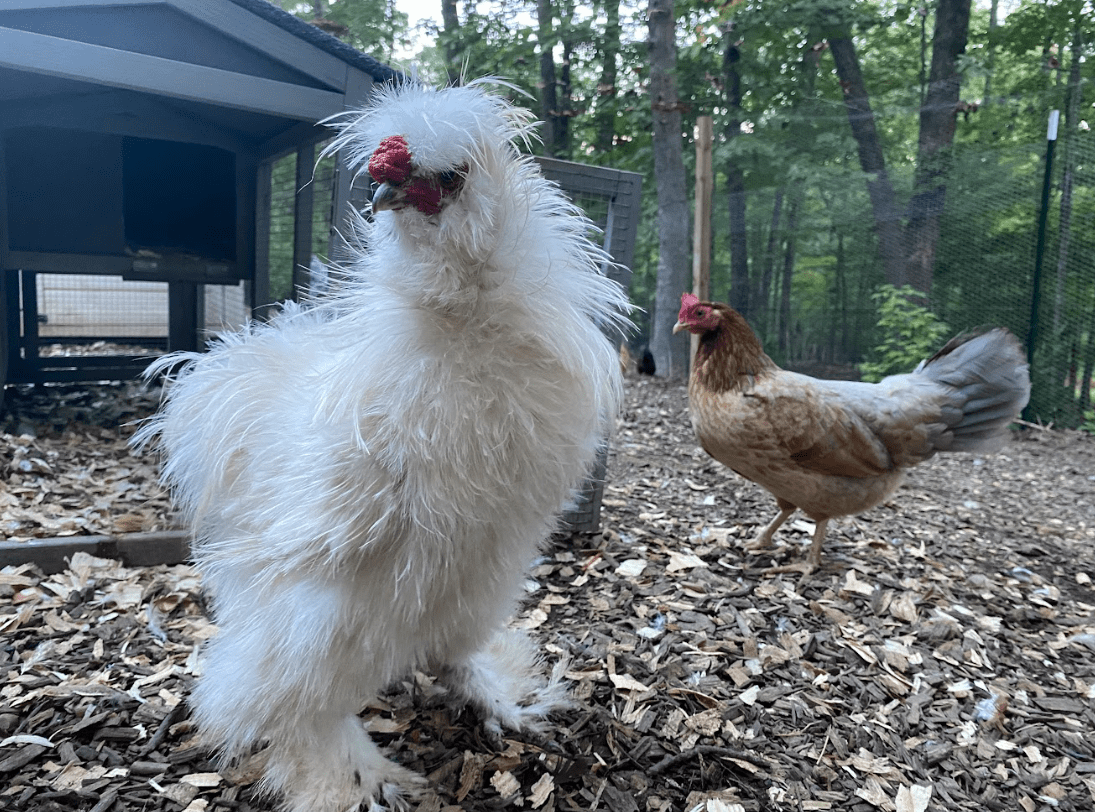Silkies are like the unicorns of the poultry universe – mysterious, magical, and irresistibly cute. In this comprehensive guide, we'll explore the history of Silkies, the differences between types, their charming personalities, distinctive appearance, egg-laying capabilities, and their specific health and care needs. Let’s get fluffy!
History: A Journey from Ancient Asia to Modern Coops Silkie Chickens, with their roots in ancient China, have been captivating hearts for centuries. Marco Polo, in his travels during the 13th century, described seeing chickens with fur-like feathers in Asia, which many believe were the ancestors of today's Silkies. They were later introduced to Europe via the Silk Road, capturing the imagination of Western poultry enthusiasts. Silkies are revered in Chinese medicine for their bones and meat, believed to have healing properties.
Types of Silkies – A Kaleidoscope of Fluff
Bearded and Non-Bearded Silkies: The Fuzzy Face-Off The Silkie world is primarily divided into two main categories: bearded and non-bearded Silkies. The bearded variety boasts an additional pouf of feathers that covers the earlobes and extends under the beak, giving them an appearance of having a beard. This feature adds to their fluffy, whimsical look and is often a favorite among Silkie enthusiasts for its unique aesthetic.
Non-bearded Silkies, while lacking the extra muff of feathers around their face, still share the same soft, fluffy plumage that makes the breed so distinctive. They often have a slightly more defined face, making their expressions more visible.
Color Varieties: A Rainbow of Silkie Splendor Silkie chickens come in a dazzling array of colors, each adding its own flair to the breed. The most common color is white, known for its striking purity and contrast against their dark skin. However, Silkies don't stop there. They come in several other colors, including:
- Black Silkies: These have a rich, deep black color that extends to their skin and bones.
- Blue Silkies: A dilution of the black gene gives these birds a lovely bluish-slate color.
- Buff Silkies: They exhibit a warm, golden-brown color, reminiscent of the golden hour.
- Partridge Silkies: This variety has a beautiful patterned plumage, with a mix of gold, brown, and black feathers.
- Gray and Splash: Less common but equally stunning, these colors add diversity to the Silkie palette.
Each color variant has its own charm and adheres to the breed standard, with the quality of the plumage and color consistency being key factors in breed shows.
Size Matters: Standard and Bantam Silkies While Silkies are generally considered a bantam (smaller) breed in the United States, there are actually two size categories globally. The standard, or larger Silkie, is more common in Europe and Asia. These birds offer the same fluffy appearance but in a slightly larger package.
The bantam Silkie, smaller and more commonly found in the US, is often preferred for its compact size and suitability for smaller backyards and gardens. Both sizes share the same friendly personality and care requirements.
Silkies with a Twist: Frizzled Feathers A unique variation within the Silkie breed is the 'Frizzle'. Frizzle Silkies have feathers that curl outwards, giving them an even fluffier and somewhat disheveled appearance. This is caused by a genetic trait that affects the direction and structure of the feather. Frizzle Silkies are a delight to Silkie enthusiasts and add an extra level of diversity to the breed.
Personality Traits: The Teddy Bears of Chickens Silkies are well-loved for their calm, friendly, and nurturing temperament. They're often described as more pet-like compared to other chicken breeds, making them fantastic for families and children. Silkies are also known for being excellent mothers, often used as broody hens to hatch eggs from other breeds.
Appearance: Soft, Fluffy, and Absolutely Adorable Apart from their unique, soft, hair-like feathers, Silkies have several other distinctive features. They possess a black skin and bones – a rarity among chicken breeds. Their fluffy plumage extends to their legs and toes, giving them a very fluffy appearance. Silkies also have a crest of feathers on their heads, which often obscures their vision, adding to their endearing charm.
Egg Production: Small but Mighty Silkies aren't prolific layers, but they do their best! They lay a modest number of small, cream-colored eggs. You can expect about 100 to 120 eggs per year from a healthy Silkie hen. While they might not fill your egg basket quickly, their maternal nature makes them ideal for hatching and raising chicks.
Health and Care: Pampering Your Poufy Pals Silkies require a bit more care than your average chicken due to their unique feathers. Their fluffy plumage can get wet and dirty easily, so they need a clean, dry coop. Wet conditions can lead to health issues like moldy feathers or frostbite in colder climates.
Their feathered feet also need attention. Mud and feces can get caught in their foot feathers, potentially causing infection. Regular coop cleaning and checking their feet is a must.
Silkies are also susceptible to predators due to their limited vision and docile nature. A secure coop and supervised free-range time are essential for their safety.
Unique Challenges: Understanding Silkie Needs Because of their unique feathers, Silkies can have trouble with flying and coping with heat. They need shaded areas during hot weather and shouldn't be kept in high roosts due to their limited flight capabilities.
Their crested feathers can obstruct their vision, making them more prone to accidents and predator attacks. Trimming the feathers around their eyes can help them see better and stay safe.
Silkies are more than just chickens; they're fluffy bundles of joy that bring a unique charm to any backyard or farm. Their distinctive appearance, sweet temperament, and motherly instincts make them a favorite among poultry enthusiasts. With proper care and lots of love, your Silkies will thrive and be a delightful part of your flock.

